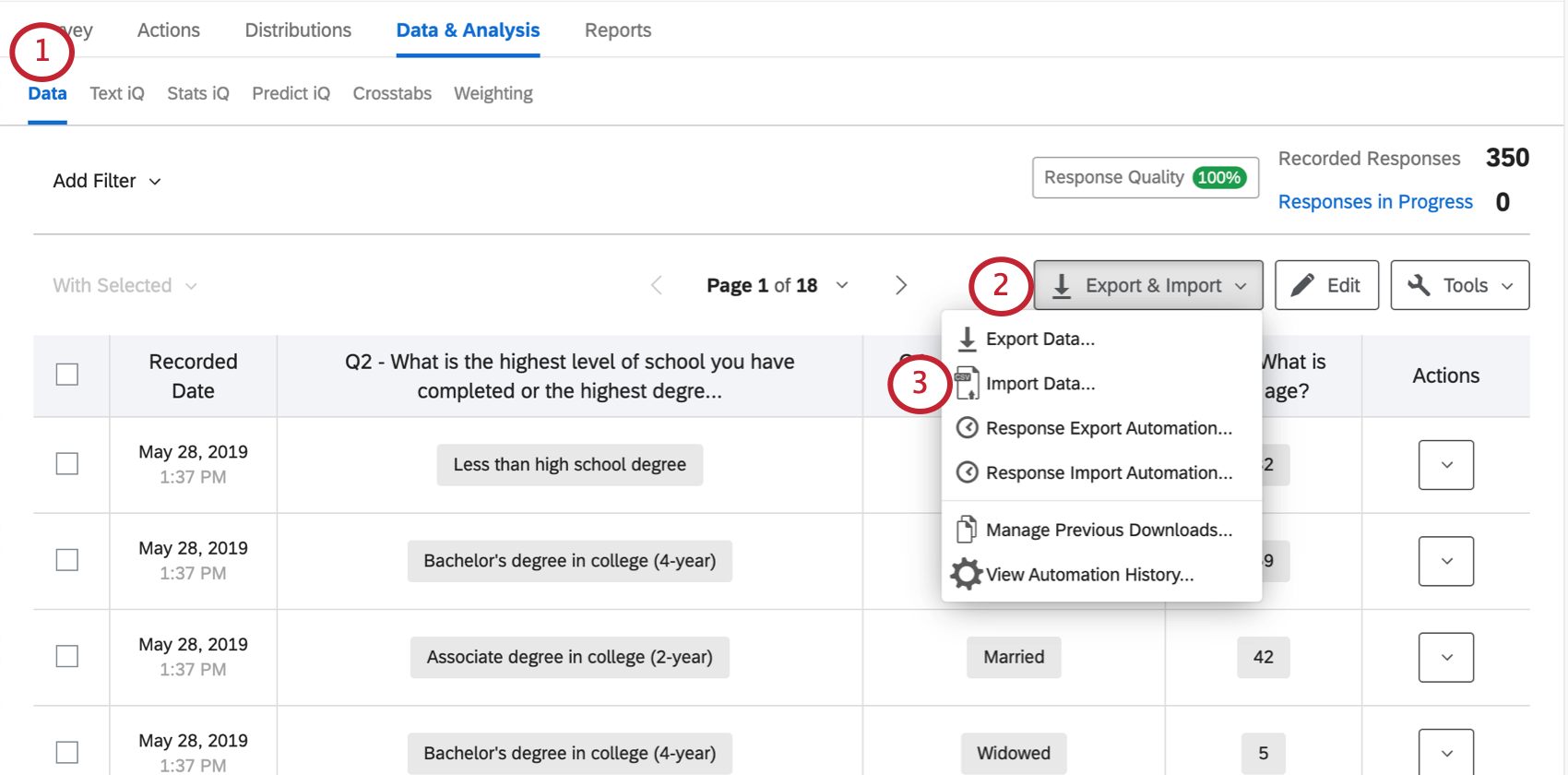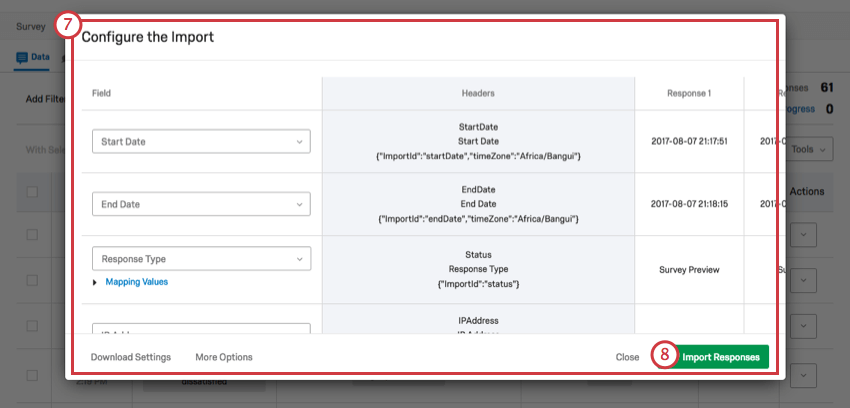Import Product Copy In Design Tools
The feedback you submit here is used only to help improve this page.
That's great! Thank you for your feedback!
Thank you for your feedback!
Qtip: Contact your Customer Success Representative or your Account Executive prior to importing historical responses as this may require an update to your license. Imported responses are considered separate from and will not impact the account's response limit.
About Importing Responses
You can import data in the Data & Analysis tab to combine responses from two identical surveys, re-upload edited data, or bring your own data into a survey.
Preparing Your Survey
Before importing, you'll first need a survey to import your data to. Your survey's format and your data file format must match exactly. This can be achieved using one of these three options:
- The survey you downloaded the data from
- A copy of the survey you downloaded the data from
- A survey identical to the one that collected the data you are importing.
Preparing a File
The importer allows you to upload responses without perfecting your data file, giving you the ability to re-order columns, adjust the timezone, specify values, and more. However, even if your file contains a few correctable errors, you still have to make sure that your data is presented in a format Qualtrics can read.
The easiest way to prepare your file is to export a Data Table file in CSV or TSV format. However, so long as you use the same format for each column's header, you can also use a TXT file.
Qtip: The maximum file size is 100MB.
Qtip: TSVs are recommended if the language of your responses contains special characters.
Importing Responses
- Navigate to the Data section on the Data & Analysis tab.

- Click on Export & Import.
- Select Import Data.
- Click Browse and select the file you wish to upload. This can be in CSV, TSV, or TXT format.

- If desired, adjust your Delimiter. Generally this is set to Comma for CSV and Tab for TSV.
Qtip: This option is especially helpful if you are uploading a TXT file. You can specify your delimiter here.
- Click Upload.
- On this window, you can check whether your fields are pulling in correctly and assign different values. See the Configuring Your Import section below for more information on this part of the process.

- Click Import Responses.
Qtip: Each imported response is a new response in your survey. Importing data in this way does not replace pre-existing responses. For example, if you upload the same data you exported back into your survey, you will have duplicated responses.
Qtip: If you've exported your data to re-import after editing the data, note that the RecordedDate will be overwritten. When you import your responses, the new RecordedDate will be the time you imported the responses. The EndDate field will still have the time that the respondent submitted their response. You can read more about these fields on the Understanding Your Data Set page.
Configuring Your Import
After you've selected the file you want to upload, you have a chance to check the file's contents and make formatting changes right inside Qualtrics. This saves you time, so that you don't have to open your file in Excel and make edits.
Correcting Columns
Did some of your columns come in out of order? Maybe there are certain variables you don't want to import at all. Click on the column header to either change the variable or select toIgnore the contents.

When a column is ignored, the variable is not deleted from Qualtrics, but the data from the column will not upload.
Qtip: Some columns are ignored by default. For example, you cannot import formulas or bucketed fields. Once their rules are set and data for the questions these rules are based on are uploaded, Qualtrics calculates formulas and bucketed fields for you.
Mapping Values
Sometimes even after cleaning your data, you'll find small errors. Maybe an answer was consistently misspelled when entered into the Excel sheet. Maybe your capitalization is wrong, or you accidentally used the wrong recode values. Mapping values allows you to adjust your import without having to reopen your file and make edits.
To get started, click the dropdown arrow next toMapping Values to expand the list of possible values.

On the right are the possible choices for the question. Since in the example here the question is "How satisfied are you with our product," the possible answers range from Extremely Satisfied to Extremely Dissatisfied on a five point scale.
On the left are the exact values typed into the data file. Ideally, these should be exactly the same, but in cases where you might have mistyped a few entries or mixed choice text and numeric data together, you may want to add additional values here.
To add another value, click the plus sign ( +), then select the answer choice that the new value is going to correspond to.

Hover over the value and click the minus (–) sign to eliminate a choice.
The new value will appear at the bottom of the list. You can modify the label on the left and the value on the right. You can add values as many times as you need to.
Example: Let's say your team manually entered some of the data into your file. One assistant accidentally wrote answer choices in all lowercase, and another wrote the numeric recode values of the choices instead of the choice text labels. In the screenshot below, both the lowercase version and recode value have been added for Extremely Satisfied.

Qtip: Mapping values does not create new answer choices! It is a way of mapping the values from your file to existing values in your project.
Download and Load Settings
When you clickDownload Settings, you will receive a JSON file of the settings used for the Import.

To reuse these settings on future imports, click More OptionsthenLoad Settings and select the settings file.

This option can be helpful if you are adept at JSON. If you do not know JSON, it is advised that you do not try to edit this file.
More Options
When you clickMore Options on the bottom-left of your Load Settings tab, you will be provided additional settings for your importer.

- Timezone: Determine the timezone of the data file. This settings applies to all date fields in the file.
- Date/Time Format: Determine the date/time format of the whole data file. If you exported the file from Qualtrics, the importer will try to detect the timezone you set on your account at the time the file was exported.
- Response start at row number: The importer usually detects this automatically. This setting determines the row where your headers end and data begins. For example, if this says 4, that means there are three rows of headers.
Troubleshooting Table Imports
The Table importer is the default importer when importing responses.
FAQs
Related Articles
Import Product Copy In Design Tools
Source: https://www.qualtrics.com/support/survey-platform/data-and-analysis-module/data/import-responses/
Posted by: edwardshimpat.blogspot.com

0 Response to "Import Product Copy In Design Tools"
Post a Comment